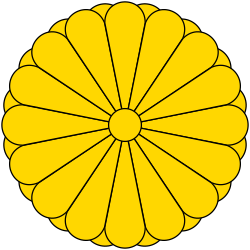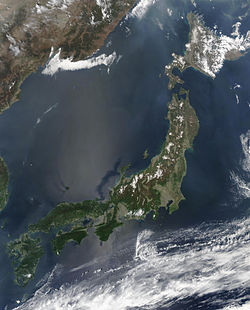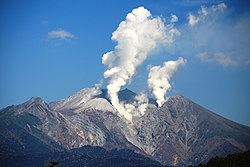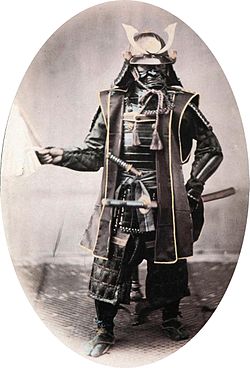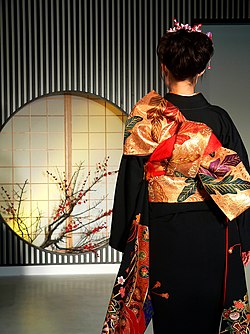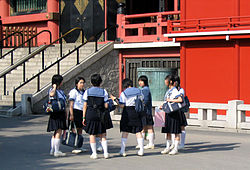

The following outline is provided as an overview of and topical guide to Japan:
Contents
- General reference
- Geography of Japan
- Environment of Japan
- Regions of Japan
- Demography of Japan
- Government and politics of Japan
- Branches of the government of Japan
- Foreign relations of Japan
- Law and order of Japan
- Military of Japan
- History of Japan
- History of Japan by period
- Culture of Japan
- Architecture of Japan
- Art of Japan
- Cuisine of Japan
- Cultural icons of Japan
- Fashion in Japan
- Holidays and festivals of Japan
- Homes in Japan
- Language in Japan
- People of Japan
- Religion in Japan
- Sports and gaming in Japan
- Economy and infrastructure of Japan
- Education in Japan
- Structure of education in Japan
- Health in Japan
- Science and technology of Japan
- See also
- Notes
- References
- External links
- Official
- Media
- Tourism
- Other
Japan– an island nation in East Asia, located in the Pacific Ocean. It lies to the east of the Sea of Japan, China, North Korea, South Korea and Russia, stretching from the Sea of Okhotsk in the north to the East China Sea and Taiwan in the south. The characters that make up Japan's name mean "sun-origin" (because it lies to the east of nearby countries), which is why Japan is sometimes referred to as the "Land of the Rising Sun". Japan is an archipelago of 14,125 islands. The four largest islands are Honshu, Hokkaido, Kyushu, and Shikoku, which together comprise about ninety-seven percent of Japan's land area.

